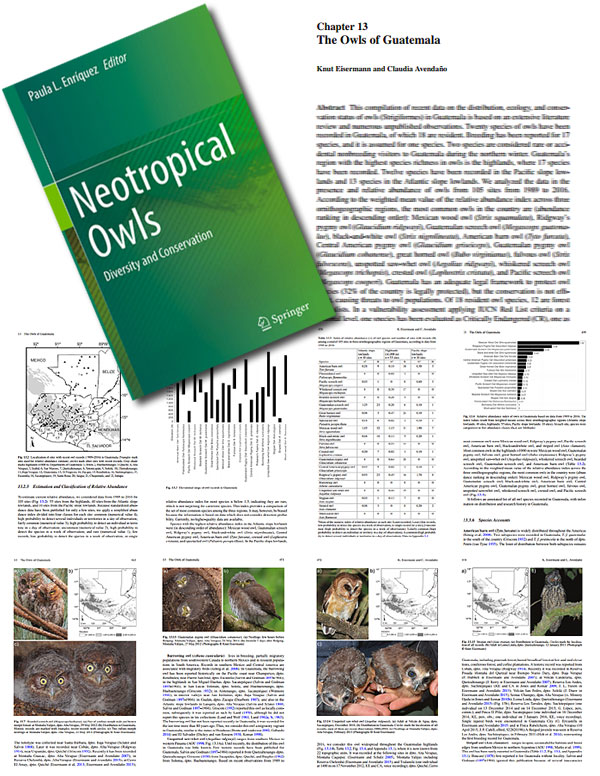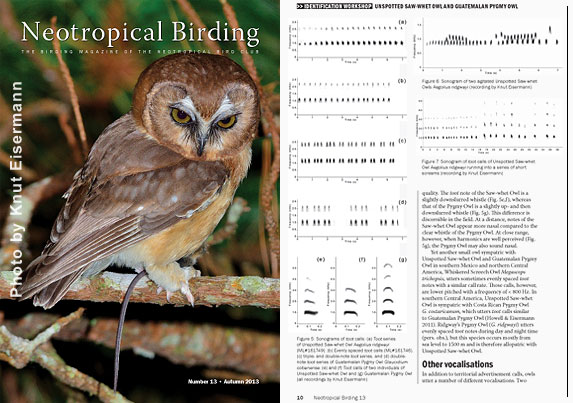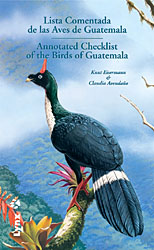Discover the birds of ANTIGUA GUATEMALA
and their habitats with Knut Eisermann & Claudia Avendaño
Antigua Guatemala is located in the southern volcanic highlands of Guatemala at an altitude of 1500 m (4900 ft). The town's surroundings within 50 km range from near sea level to 3800 m (12,500 ft). More than 400 bird species occur in this area.
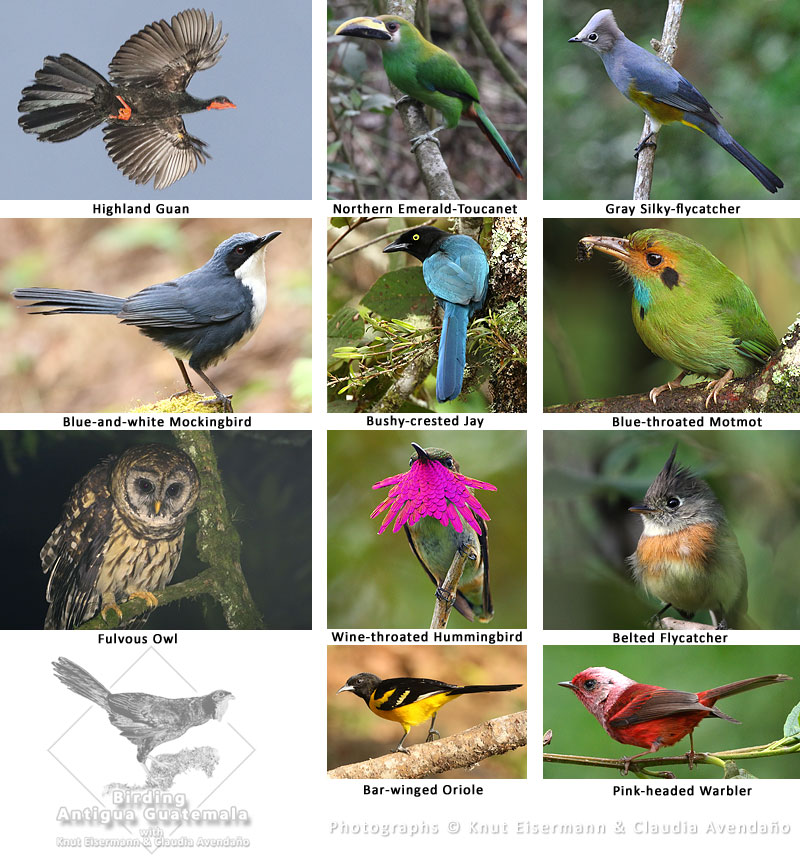
The mean annual precipitation of 1000 mm (40 in) in the near surroundings of Antigua Guatemala is relatively low, compared to Guatemala's most humid rain and cloud forest areas which receive more than 4000 mm (160 in). Therefore, natural forests on the slopes around Antigua are mainly semihumid pine-oak forests and arid forests not taller than 15 meters. Cloud forests are restricted to the most humid upper slopes.
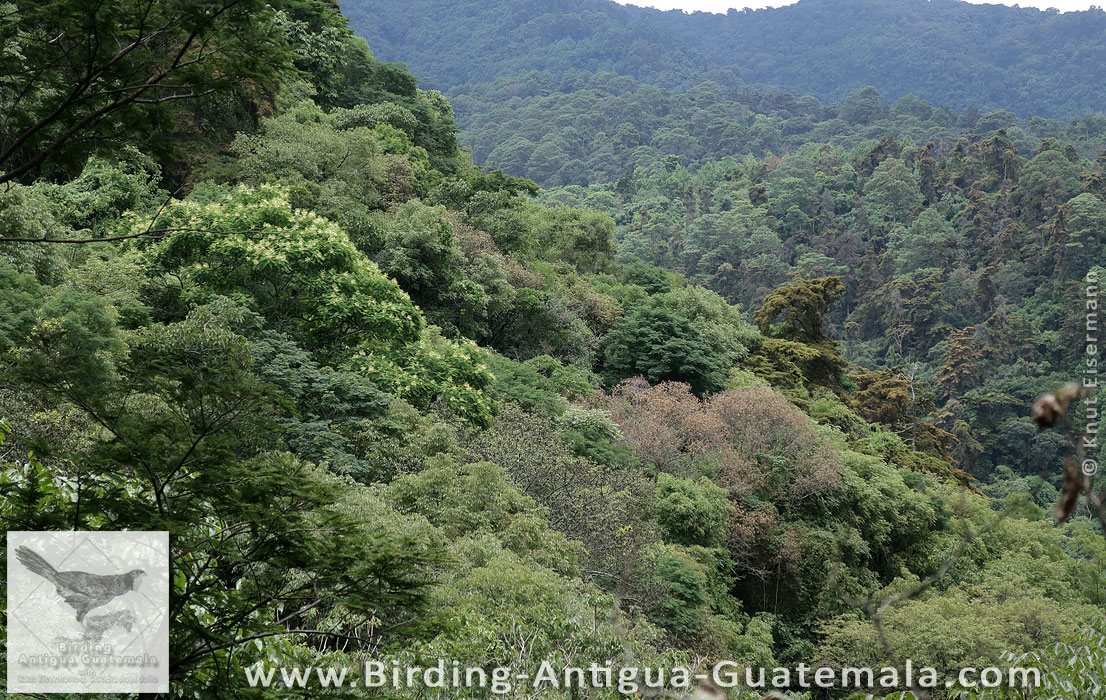
The landscape above 500 m (1640 ft) belongs to the Endemic Bird Area North Central American Highlands (EBA 018), which includes the South-Mexican highlands south of the Isthmus of Tehuantepec and the highlands of Guatemala, Honduras, El Salvador and western Nicaragua. More than 25 bird species are restricted to this area, such as Pink-headed Warbler, Bar-winged Oriole, Horned Guan, Highland Guan, and Black-capped Siskin, to name a few. Another 30 species have a wider range restricted to the highlands of northern Central America and the Sierra Madre mountain range of Mexico, such as Mountain Trogon, Brown-backed Solitaire, or Amethyst-throated Mountain-gem. Most of the regional endemic bird species are well represented in the surroundings of Antigua Guatemala.
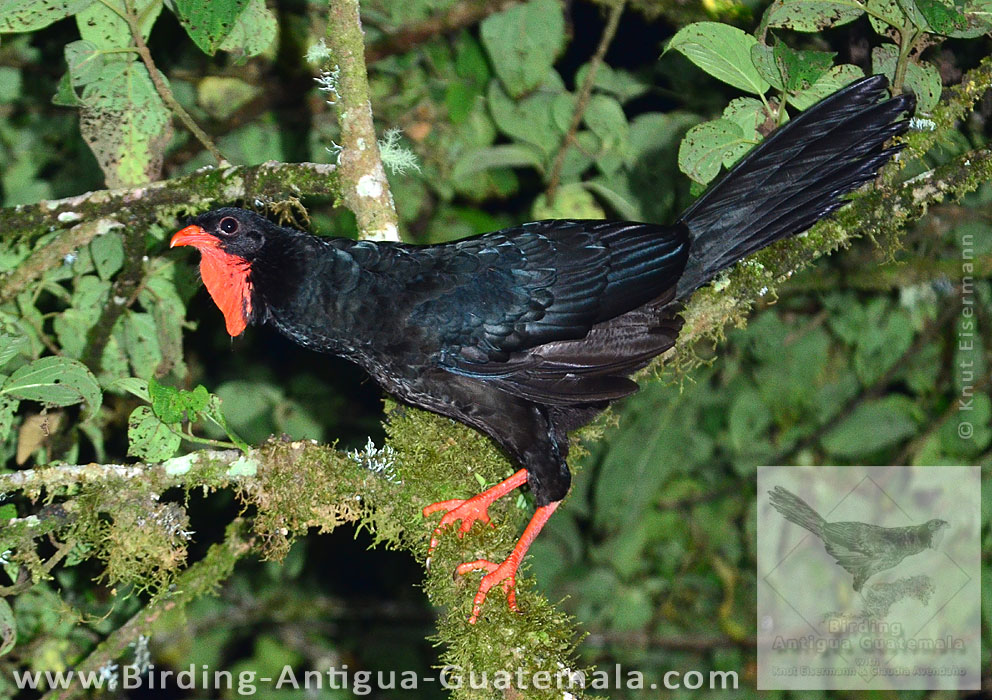
Some of the regional endemics are widespread and occur in any kind mountain forest, such as Rufous-browed Wren and Brown-backed Solitaire. Others occur only locally because of habitat specialization or general rarity, such as Horned Guan, Wine-throated Hummingbird, or Belted Flycatcher.
During the boreal winter, Antigua Guatemala's avifauna is enriched by numerous Nearctic-Neotropical migratory birds. Among the earliest to arrive in fall are the waterthrushes (Northern and Louisiana), Black-and-white Warbler, Canada Warbler, Yellow-bellied and Least flycatchers. From September to April/May, large mixed flocks of warblers and vireos (Warbling, Blue-headed, Philadelphia, Brown-capped vireos) can be observed. Townsend's, Wilson's, Tennessee, and Black-and-white warblers belong to the most common wintering warblers, but also Black-throated Green, Hermit, Red-faced, and Nashville warblers often join the flocks. Once in a while also Golden-cheeked and Golden-winged warblers can be seen. Among the resident warblers, Slate-throated Redstart, Crescent-chested Warbler, Rufous-capped, Pink-headed, and Olive warblers can be seen in the mixed flocks.
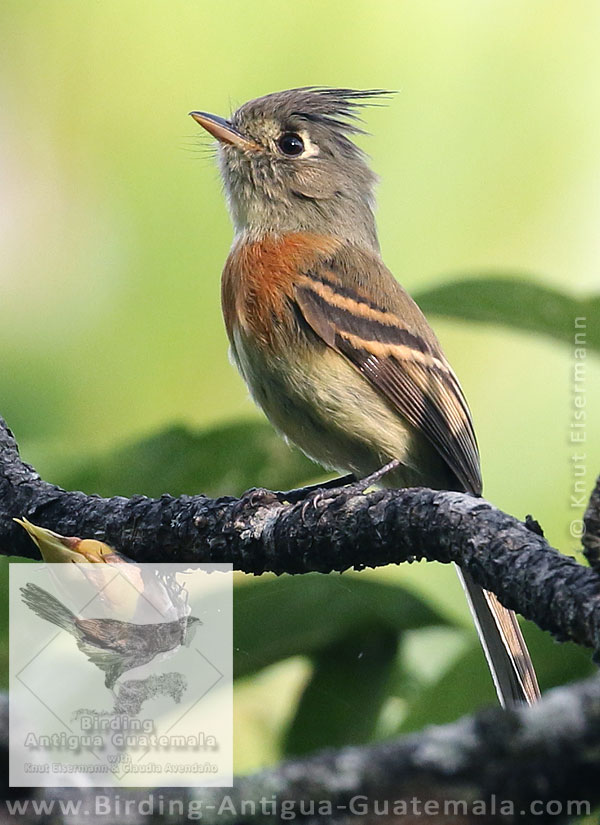
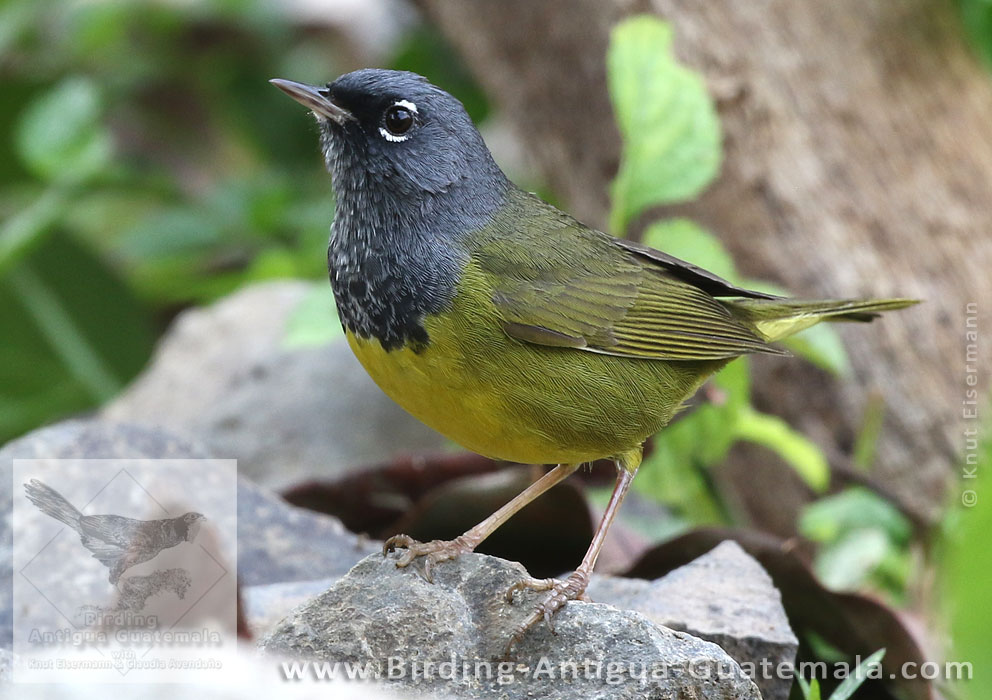
The avifauna of Antigua Guatemala is not only interesting for keen birders looking for regional endemic birds. It is also interesting for beginning bird watchers and nature enthusiasts who simply want to enjoy a day in the woods, seeing some exotic looking birds such as toucans (Northern Emerald-Toucanet), trogons (Collared Trogon and MountainTrogon), motmots (Blue-throated Motmot, Lesson's Motmot) or hummingbirds (e.g. Violet Sabrewing or Berylline Hummingbird).
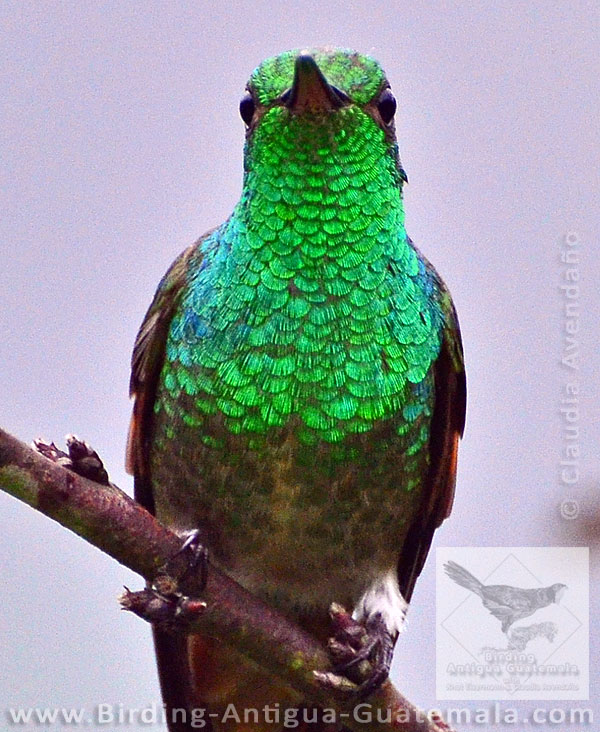
Start here planning your birding day trip from Antigua Guatemala, using our online form or by telephone / WhatsApp / Signal: +502 5308 5160:
